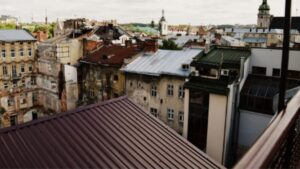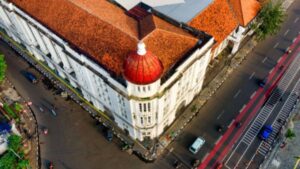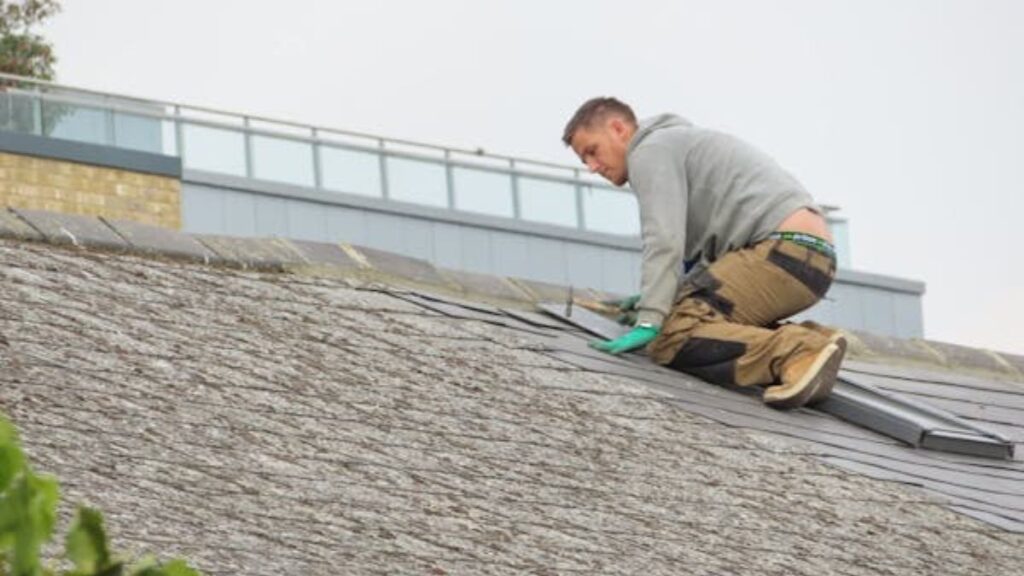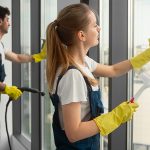Your business roof is one of its most critical structural components, yet it’s often overlooked until serious problems arise. A damaged roof can lead to costly repairs, energy inefficiencies, and even safety hazards for employees and customers. Small issues like leaks, sagging, or damaged flashing can quickly escalate into major structural failures if not addressed in time. Water infiltration, mold growth, and poor insulation can also disrupt daily operations and create an unhealthy work environment. Ignoring early warning signs can result in business downtime, expensive damage to interior assets, and legal liabilities. Regular inspections and timely repairs are important to maintaining the integrity of your commercial roof.

Visible Water Leaks and Stains
If you notice water dripping from the ceiling or see dark stains on walls and tiles, your roof likely has cracks, missing shingles, or worn-out seals. Prolonged exposure to moisture can weaken the structural integrity of your building, promote mold growth, and create hazardous working conditions for employees. Even if the leaks seem minor, they can indicate hidden damage that worsens over time, making it important to seek business roofing solutions to prevent costly water damage and potential health risks associated with mold and mildew. Addressing leaks as soon as they appear can save you from costly water damage repairs and potential health risks associated with mold and mildew.
Sagging or Uneven Roof Sections
If you notice sagging, dips, or uneven areas, it’s a serious sign that your roof is suffering from water damage, structural deterioration, or poor drainage. A sagging roof can lead to complete roof collapse if not repaired in time, putting your employees and customers at risk. The weight of accumulated water, heavy snow, or even rotting roof decking can cause sections to weaken and cave in. If your roof has any noticeable low spots or appears warped, you need professional roofing contractors to assess the extent of the damage and reinforce the structure before it gets worse.
Blistering or Bubbling on the Roof Surface
Flat commercial roofs often develop blisters or bubbles due to trapped moisture or poor installation. These blisters form when air or water gets trapped under the roof membrane, causing raised, bubble-like formations. Over time, these weak points can burst, leading to leaks, cracks, and more severe structural issues. Blisters not only compromise the durability of your roofing material but also reduce its insulation capabilities, leading to higher energy costs. If you see any bubbling on your roof’s surface, immediate repairs are necessary to prevent further degradation and potential water infiltration.
Damaged or Missing Flashing
Flashing is the metal material installed around vents, skylights, chimneys, and other roof penetrations to prevent water from seeping into vulnerable areas. If your flashing is cracked, rusted, or missing, your roof becomes highly susceptible to leaks. Over time, fluctuating temperatures, high winds, and moisture exposure can cause flashing to loosen or corrode, leaving gaps where water can enter. A compromised flashing system can lead to significant interior damage, weakening insulation, and causing wood rot. Inspect your roof’s flashing regularly, and if you notice any signs of deterioration, repair or replace it immediately to maintain a watertight seal.
Increasing Energy Bills
If you’ve noticed a sudden spike in heating or cooling costs, your roof may no longer be providing proper insulation. Damaged roofing materials, leaks, or deteriorated insulation can allow warm or cool air to escape, forcing your HVAC system to work harder to maintain a comfortable indoor temperature. Poor insulation due to roof damage leads to higher operational costs and reduced comfort for employees and customers. If you’re experiencing unexplained energy inefficiencies, have a professional inspect your roof for any hidden damage affecting your building’s insulation and energy performance.
Mold, Mildew, or Unpleasant Odors
Excess moisture in your commercial building can lead to mold and mildew growth, which not only damages your property but also poses serious health risks. If you notice musty odors, visible mold growth on ceilings or walls, or increased allergy symptoms among employees, your roof could be leaking and creating a damp environment. Mold spores thrive in moist conditions, spreading quickly and causing respiratory issues, skin irritation, and other health complications. Ignoring mold growth can lead to expensive remediation costs and potential legal liabilities. If you suspect mold due to a roof leak, act immediately to fix the underlying issue and prevent further contamination.

Your commercial roof plays a crucial role in protecting your business, and any signs of damage should never be ignored. Water leaks, sagging sections, bubbling surfaces, damaged flashing, rising energy costs, and mold growth all indicate that your roof needs immediate repair. Addressing these issues promptly can save you from expensive repairs, prevent safety hazards, and make sure your business operations continue without disruption. Regular roof inspections and proactive maintenance are the best ways to extend the lifespan of your roof and protect your investment. If you’ve noticed any of these warning signs, contact a professional roofing contractor right away to assess the damage and perform the necessary repairs before it’s too late.







